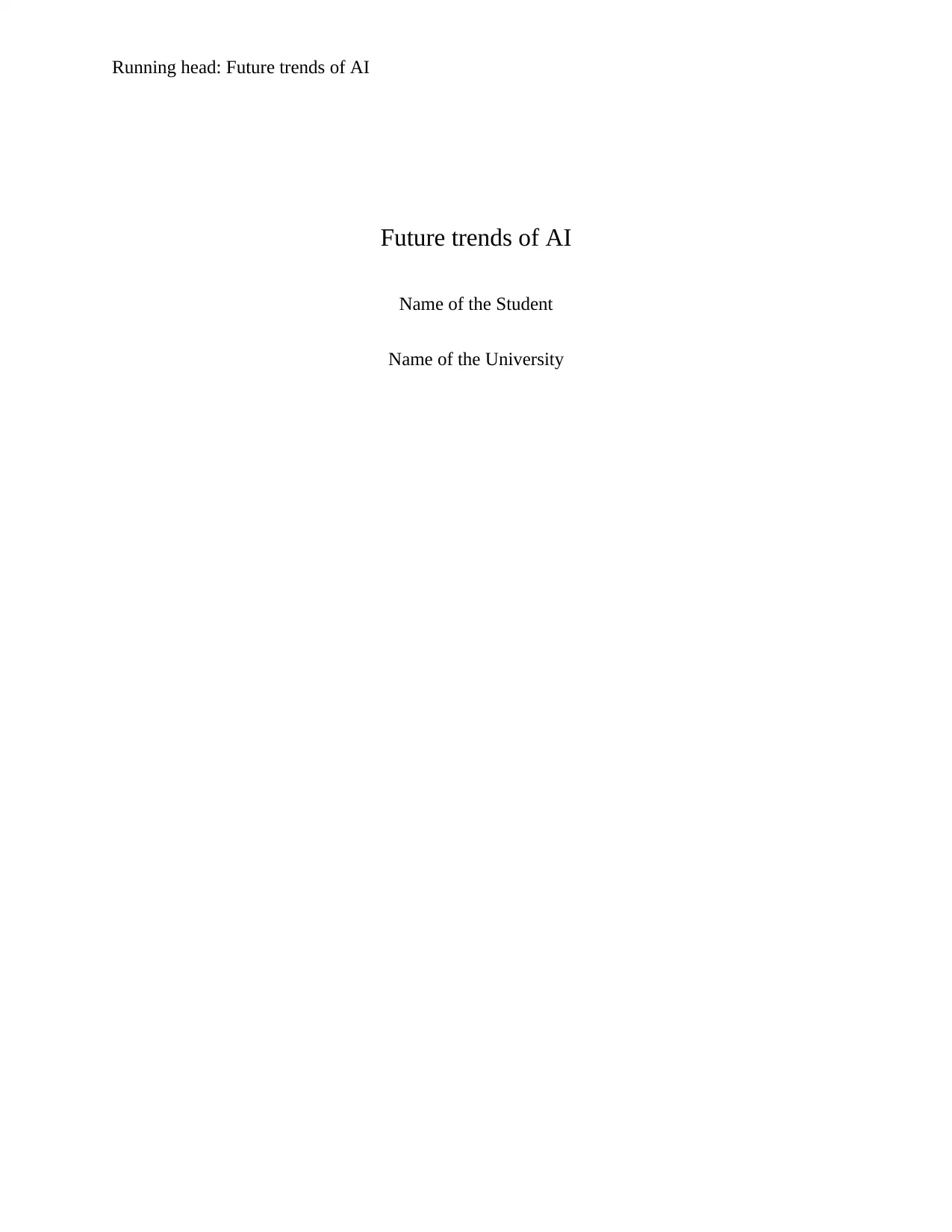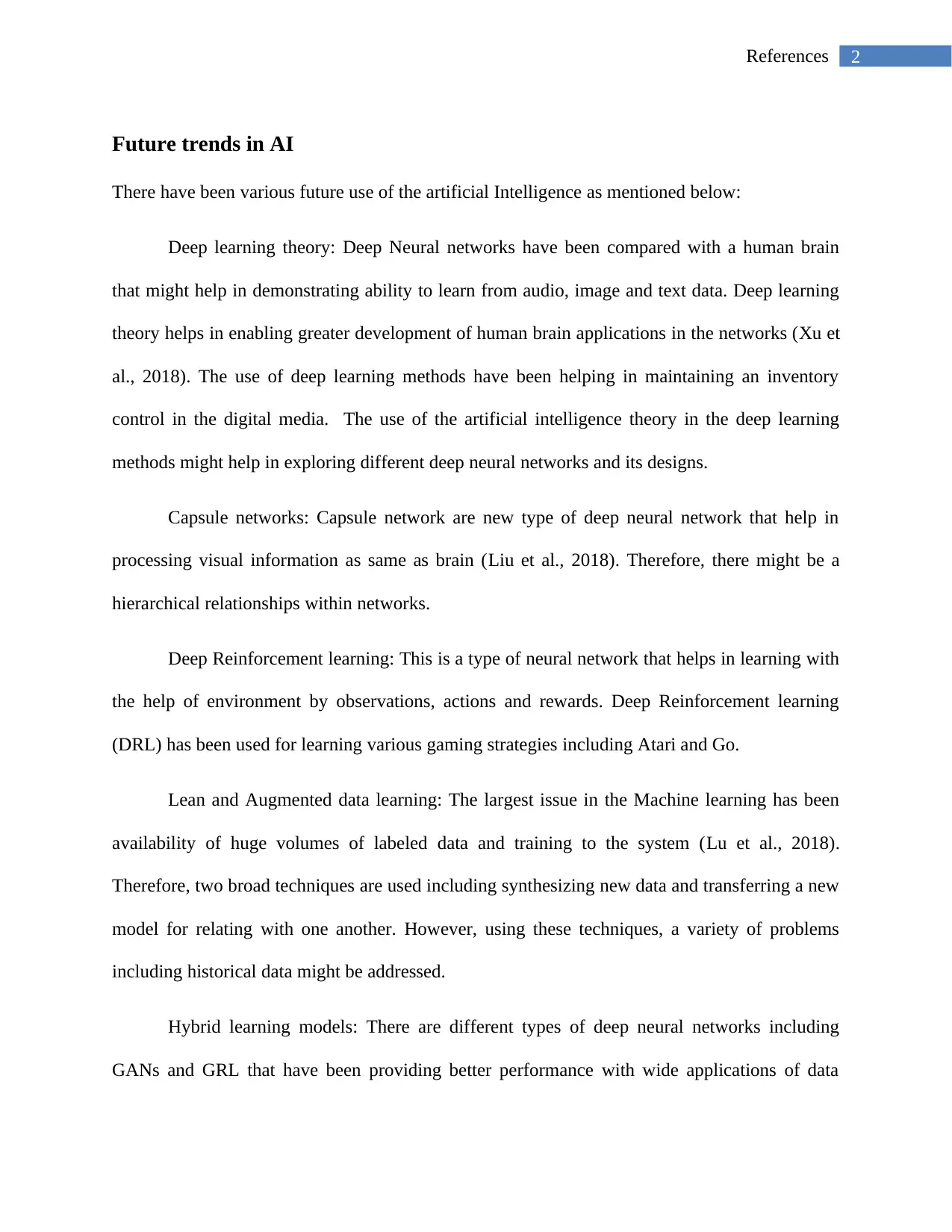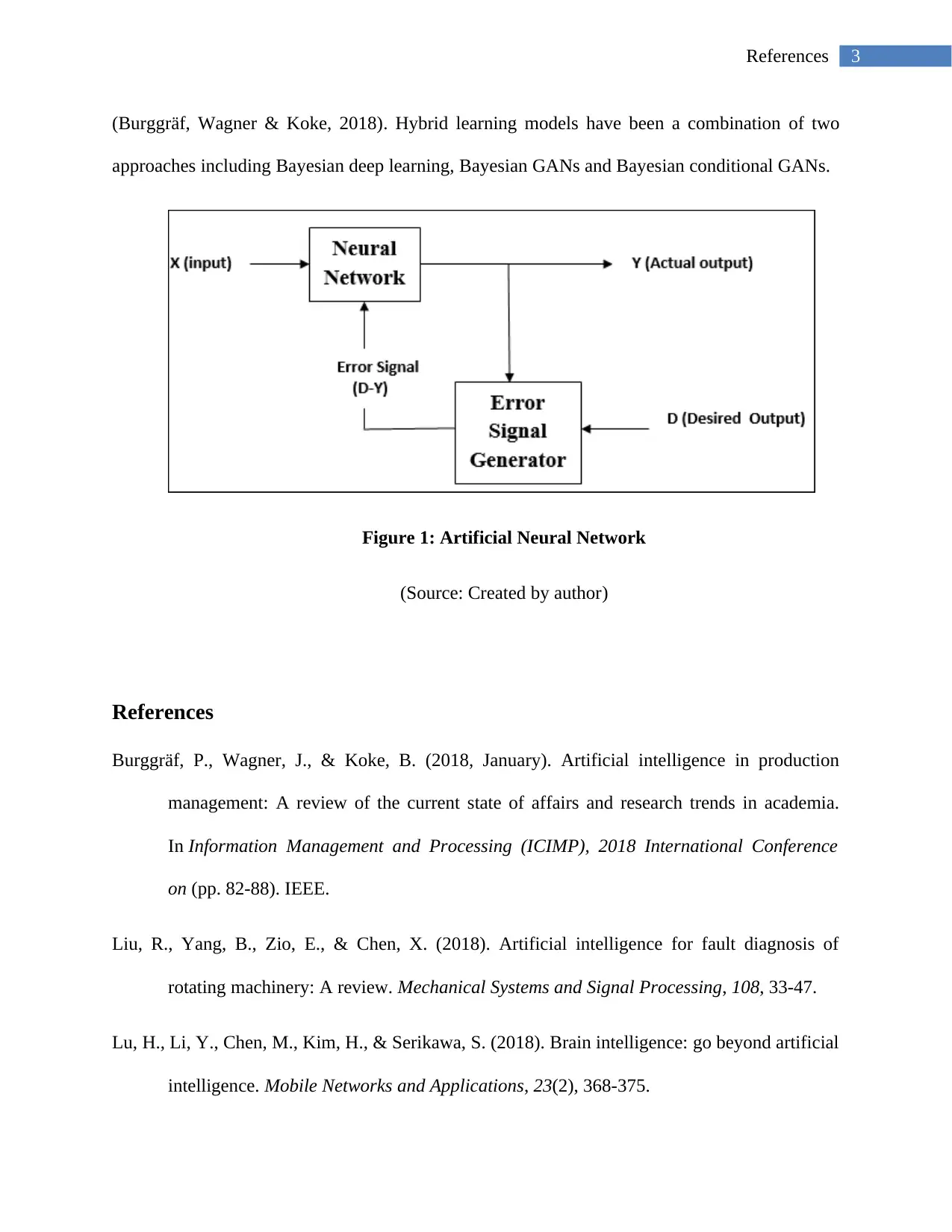Future Trends in AI: Deep Learning, Reinforcement, and Hybrid Models
VerifiedAdded on 2023/05/28
|4
|562
|454
Essay
AI Summary
This essay explores the future trends of artificial intelligence, focusing on several key areas. It begins with deep learning theory, highlighting how deep neural networks mimic the human brain's ability to learn from various data types. The essay then discusses capsule networks, a new type of deep neural network designed to process visual information similarly to the brain, establishing hierarchical relationships within networks. Deep reinforcement learning (DRL) is also examined, noting its capacity to learn from environmental interactions through observations, actions, and rewards, with applications in gaming strategies. The challenges of data availability in machine learning are addressed through lean and augmented data learning techniques, which involve synthesizing new data and transferring models. Finally, the essay introduces hybrid learning models, combining approaches like Bayesian deep learning and Bayesian GANs to enhance performance and broaden data applications. The essay concludes by referencing an artificial neural network diagram.
1 out of 4










![[object Object]](/_next/static/media/star-bottom.7253800d.svg)